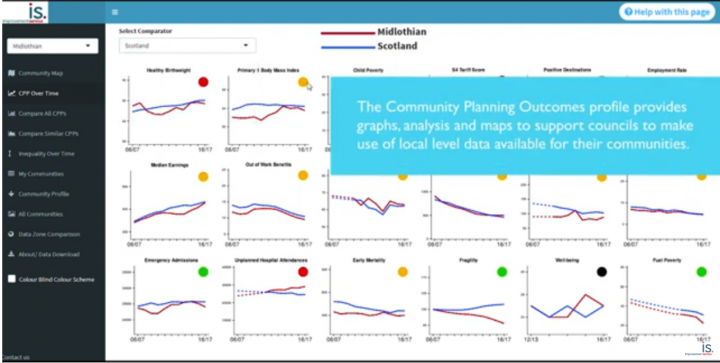The LGBF is a high-level benchmarking tool designed to support senior management teams and elected members to ask questions about key council services.
It reflects a commitment by SOLACE (Scotland) and COSLA to develop better measurement and comparable data as a catalyst for improving services, targeting resources to areas of greatest impact and enhancing public accountability.
The framework provides high-level ‘can openers’ which are designed to focus questions on why variations in cost and performance are occurring between similar councils. They do not supply the answers. That happens as councils engage with each other to ‘drill down’ and explore why these variations are happening.
The LGBF helps councils compare their performance against a suite of efficiency, output and outcome indicators that cover all areas of local government activity. The framework now has 13 years of data. Publication of the LGBF forms part of each council’s statutory requirements for public performance reporting, replacing the previous SPI regime.
The LGBF voluntarily applies the high standards for statistical rigour set out in the three pillars of the UK Statistics Authority Code of Practice – trustworthiness, quality, and value.
A short introduction to the Local Government Benchmarking Framework (LGBF) for Scottish local government. This video also highlights the Community Planning Outcomes Profile (CPOP) and how they can be used together to set priorities for local outcomes.
The LGBF is not an end in itself - it is how it is used within local planning, improvement, change management, scrutiny and reporting activities that matters. Information within the LGBF should be interpreted against the strategic priorities being pursued by each council.
The Outcomes tool highlights the contribution council services play in improving outcomes, and links to the Community Planning Outcomes Profile to support the more strategic use of the LGBF in decision making and Public Performance Reporting.
Councils are arranged in ‘family groups’, so that we are comparing councils that are similar in terms of the type of population that they serve (e.g. relative deprivation and affluence) and the type of area in which they serve them (e.g. urban, semi-rural, rural). The point of comparing like with like is that this is more likely to lead to useful learning and improvement.
